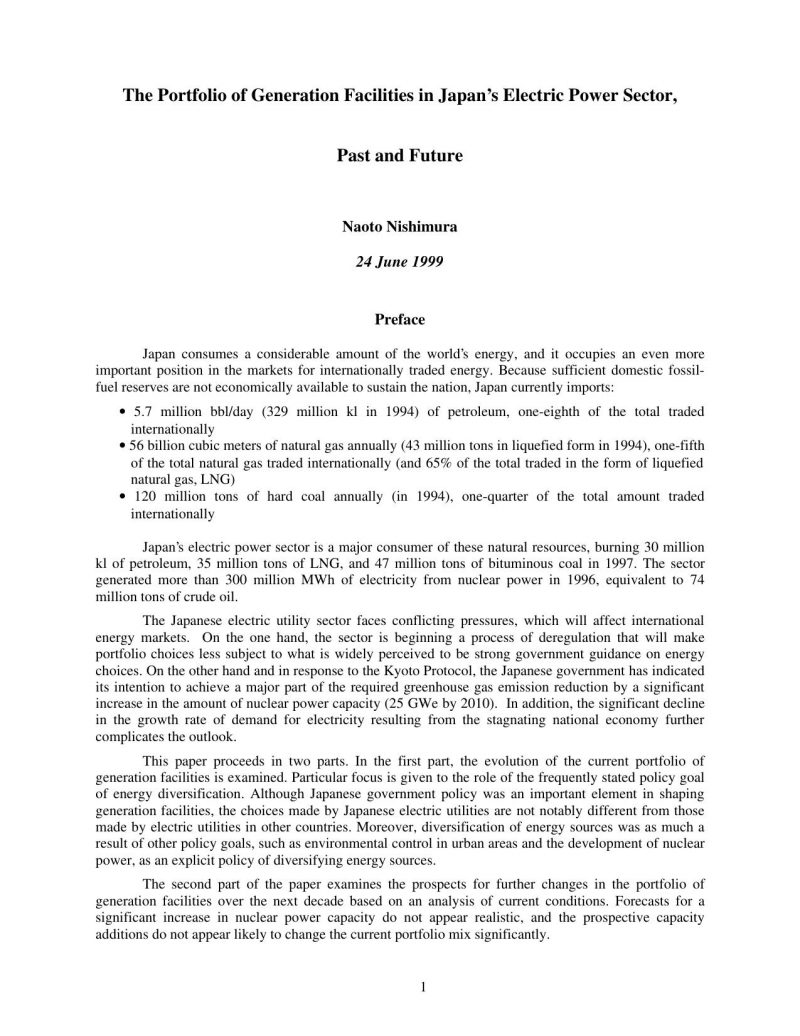The Portfolio of Generation Facilities in Japan’s Electric Power Sector, Past and Future
Naoto Nishimura
Jun-99
Japan consumes a considerable amount of the world’s energy, and it occupies an even more important position in the markets for internationally traded energy. Because sufficient domestic fossil-fuel reserves are not economically available to sustain the nation, Japan currently imports:
5.7 million bbl/day (329 million kl in 1994) of petroleum, one-eighth of the total traded internationally
56 billion cubic meters of natural gas annually (43 million tons in liquefied form in 1994), one-fifth of the total natural gas traded internationally (and 65% of the total traded in the form of liquefied natural gas, LNG)
120 million tons of hard coal annually (in 1994), one-quarter of the total amount traded internationally
Japan’s electric power sector is a major consumer of these natural resources, burning 30 million kl of petroleum, 35 million tons of LNG, and 47 million tons of bituminous coal in 1997. The sector generated more than 300 million MWh of electricity from nuclear power in 1996, equivalent to 74 million tons of crude oil.
The Japanese electric utility sector faces conflicting pressures, which will affect international energy markets. On the one hand, the sector is beginning a process of deregulation that will make portfolio choices less subject to what is widely perceived to be strong government guidance on energy choices. On the other hand and in response to the Kyoto Protocol, the Japanese government has indicated its intention to achieve a major part of the required greenhouse gas emission reduction by a significant increase in the amount of nuclear power capacity (25 GWe by 2010). In addition, the significant decline in the growth rate of demand for electricity resulting from the stagnating national economy further complicates the outlook.
This paper proceeds in two parts. In the first part, the evolution of the current portfolio of generation facilities is examined. Particular focus is given to the role of the frequently stated policy goal of energy diversification. Although Japanese government policy was an important element in shaping generation facilities, the choices made by Japanese electric utilities are not notably different from those made by electric utilities in other countries. Moreover, diversification of energy sources was as much a result of other policy goals, such as environmental control in urban areas and the development of nuclear power, as an explicit policy of diversifying energy sources.
The second part of the paper examines the prospects for further changes in the portfolio of generation facilities over the next decade based on an analysis of current conditions. Forecasts for a significant increase in nuclear power capacity do not appear realistic, and the prospective capacity additions do not appear likely to change the current portfolio mix significantly.



